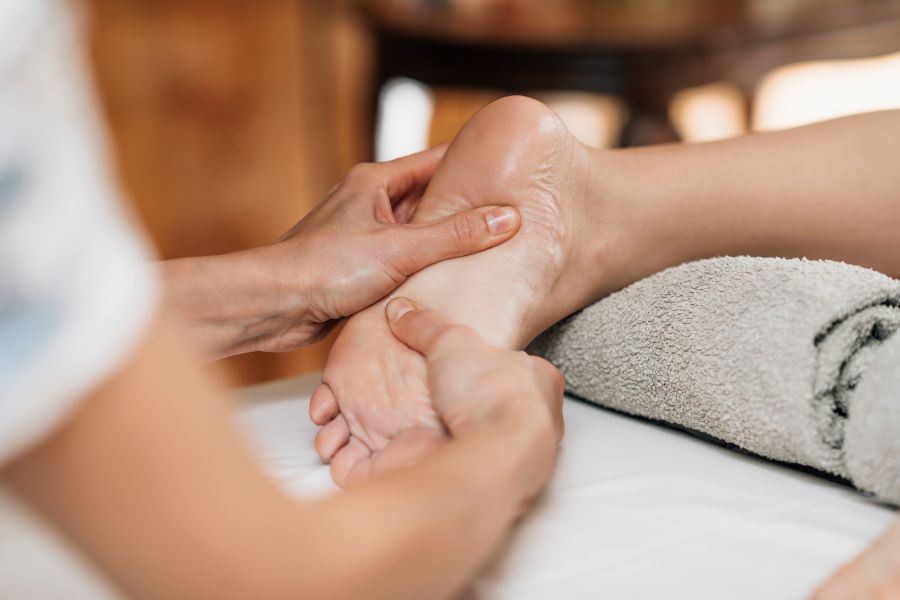If you’re feeling burnt out, tense, or just plain sore, you’ve probably considered booking a massage—or maybe someone recommended reflexology. They both sound relaxing, but they’re not the same thing. In fact, they work in very different ways and offer unique benefits depending on what your body actually needs.
Let’s break it down.
If you’re in Smithville or the Niagara Region and curious to try either, Breathe Wellness offers both services (and more!) with trained practitioners who can help you figure out what fits best. Book today.
What Is Massage Therapy?
Massage therapy is the manipulation of muscles and soft tissues to relieve tension, improve circulation, and support recovery. Most people are familiar with common styles like:
- Swedish massage – gentle, full-body relaxation.
- Deep tissue massage – targets deeper layers of muscle, ideal for chronic pain or injury recovery.
- Hot stone massage – uses heated stones to loosen tight muscles and enhance relaxation.
Massage typically focuses on full-body treatment or isolated problem areas like the back, neck, or shoulders.
What Is Reflexology?
Reflexology isn’t technically massage. It’s a targeted pressure-point therapy based on the idea that specific zones in the hands, feet, and ears correspond to organs and systems in the body.
The goal isn’t to knead your muscles—it’s to stimulate the nervous system and support balance and healing through specific “reflex points.” Practitioners use their thumbs and fingers to apply steady pressure to these zones. The experience is often described as deeply relaxing but more focused and less fluid than a typical massage.
Key Differences at a Glance
| Massage Therapy | Reflexology | |
|---|---|---|
| Focus | Muscles, soft tissue | Reflex points on feet, hands, ears |
| Technique | Rubbing, kneading, stroking | Steady pressure on precise points |
| Purpose | Relieve muscle tension, pain, stress | Promote balance, energy flow, wellness |
| Tools Used | Hands, forearms, sometimes hot stones | Mostly thumbs and fingers |
| Feels Like | Flowing, full-body or area-specific | Targeted, pressure-based stimulation |
When Should You Choose Reflexology?
Opt for reflexology if:
- You’re looking to support digestion, sleep, or hormone balance
- You prefer non-invasive, light-touch therapy
- You’re sensitive to full-body massage or recovering from illness
- You’re curious about complementary healing practices
When Massage Is the Better Fit
Go for massage therapy if:
- You have tight muscles, knots, or chronic pain
- You need relief from stress or poor posture
- You’re physically active and need recovery support
- You want a relaxing, full-body experience
Can You Combine Them?
Absolutely. Many people alternate between the two or use reflexology to complement a massage plan. They tap into different systems—muscular vs nervous—so pairing them can give you a more holistic reset.
Choose your Treatment
If you’re trying to decide between reflexology and massage, the choice comes down to your body’s needs. Reflexology works internally, targeting energy flow and organ function. Massage works externally, focusing on muscle repair and tension relief. Importantly, both can serve to alleviate stress, anxiety and offer relaxation and restoration. Who doesn’t want that?

